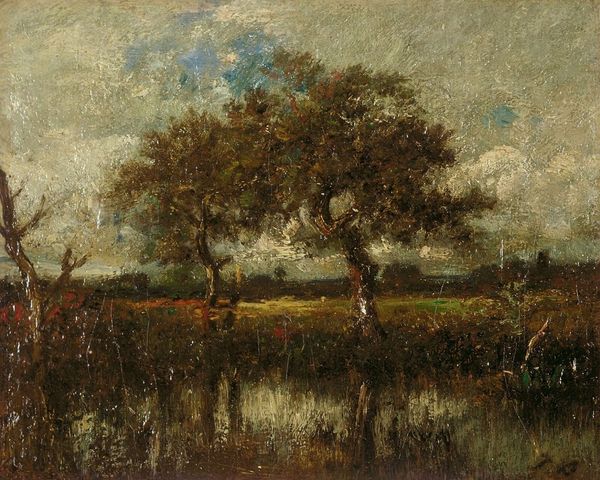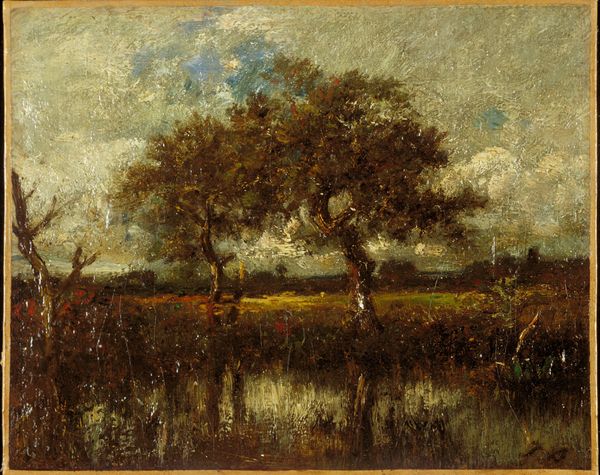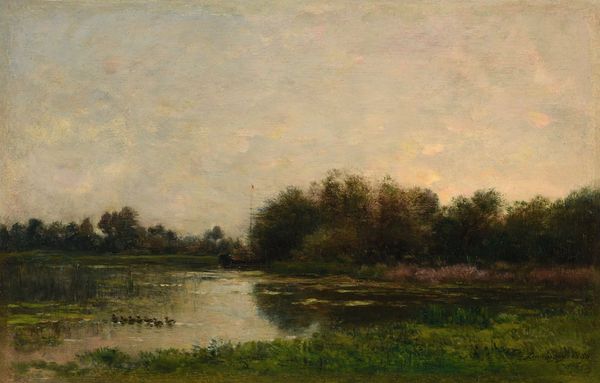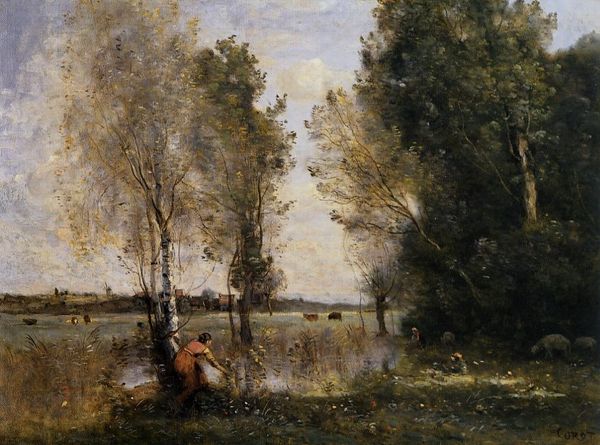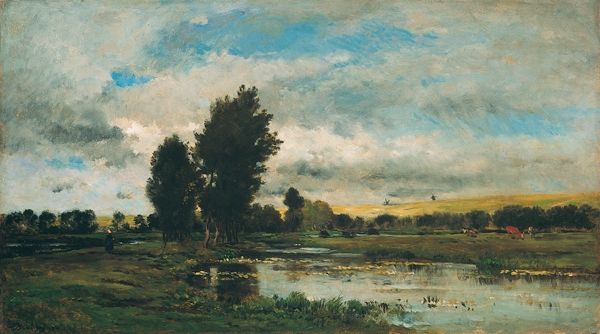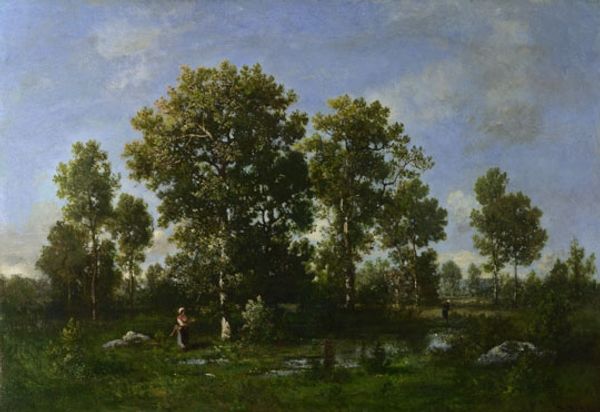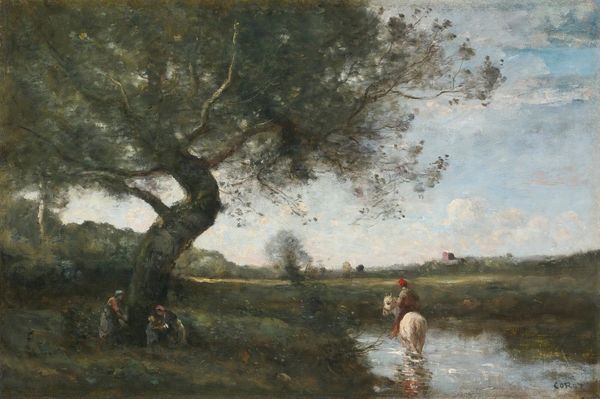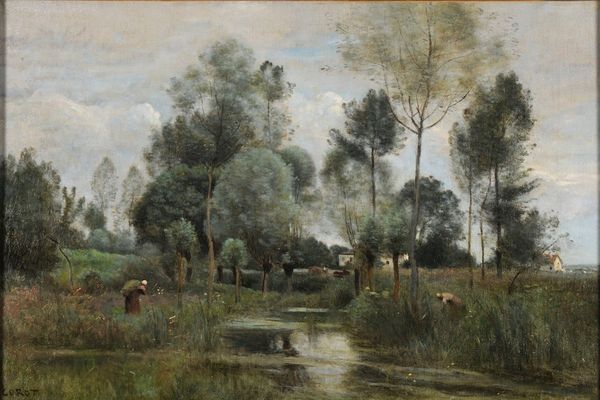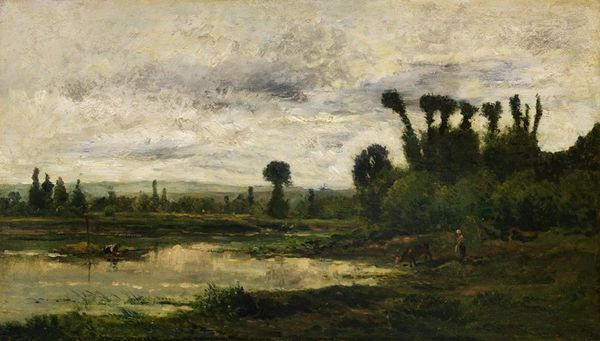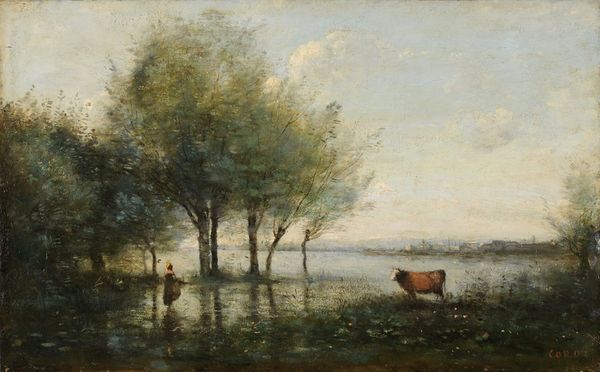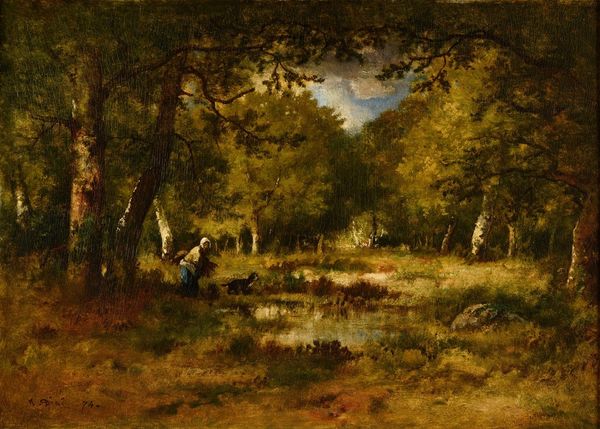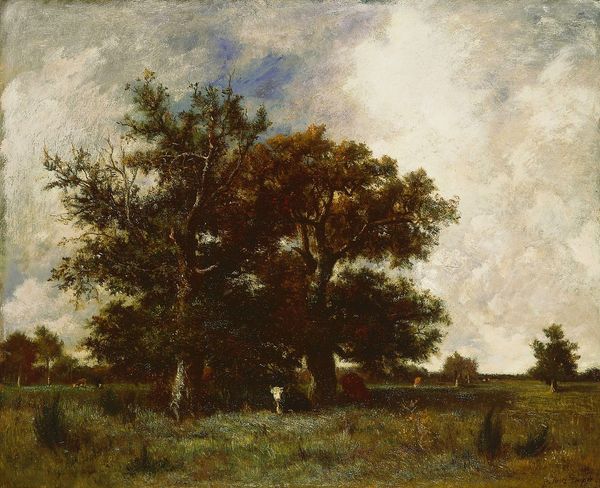
painting, oil-paint
#
painting
#
impressionism
#
oil-paint
#
landscape
#
impressionist landscape
#
figuration
#
genre-painting
#
realism
Copyright: Public domain
Curator: Jules Dupré, known for his role within the Barbizon school, created this evocative landscape, “Willows with a Man Fishing.” It’s an oil painting. What strikes you first about it? Editor: The sheer density of the application! Look at how Dupré layers and masses that paint; the canvas practically throbs with it. It really brings out the physicality of nature. Curator: Indeed. He presents nature in a manner that departs from traditional landscape painting, focusing more on immediate sensory experience than idealized views. This coincides with broader societal shifts, where art began reflecting everyday life. Editor: I am especially drawn to the rendering of those willow trees and how it might speak to agricultural labour in the era! Note the evidence of pollarding on their trunks—it’s like Dupré highlights humanity’s deliberate interaction with the landscape, resource extraction via material. Curator: It does subtly acknowledge those relationships! Considering the role that landscape paintings played in fostering a sense of national identity during the 19th century, you have to wonder what statements, conscious or unconscious, Dupre is making with the solitary fisherman... Is he meant to embody a harmonious connection, or something else entirely? Editor: Maybe even the simple availability of leisure! The paint application, however, complicates this further, don't you think? Thick and unblended, it calls so much attention to the fact *this* is a painting, first and foremost. Not pure, unfettered nature. Curator: Precisely. Dupré is a great example of the intersection between the real and the representational. A bridge, perhaps. Editor: Exactly. The painting's physicality makes it honest. The man isn’t just fishing, the painter is laboring! What can we take away, then? Curator: "Willows with a Man Fishing," through its realism and attention to labor, provides a subtle commentary on how our vision and connection to nature might have changed during a quickly-changing time. Editor: And, that our interpretation hinges on appreciating the physicality of both what is shown, and how the artist crafted it!
Comments
No comments
Be the first to comment and join the conversation on the ultimate creative platform.
